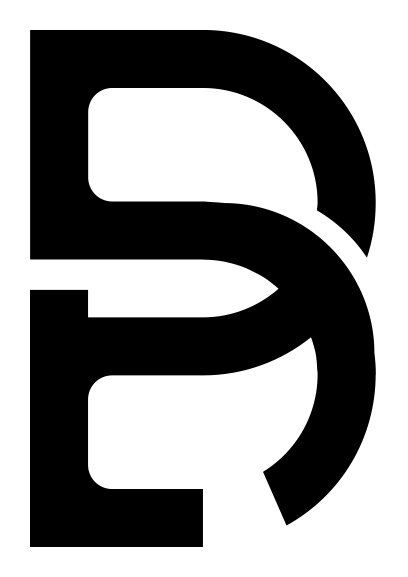Retirement Date Calculator: How Much Do I Need to Retire, and How Long Will It Take?
Someday this will be you!
While you’re working toward the ultimate goal of retirement, you might be wondering, “How much longer is this going to take?” If you’re just starting out, you’re also probably wondering how much you need to save.
Well, you’re in the right place! I’ve built a calculator for this exact purpose! Plug in your numbers, and it gives you an answer! How does it work? Math! The details are below. You can plug in your current situation to find out how far away you are from retiring and how much you need to save to get there.
Retirement Date Calculator
Your Numbers
Results
|
*Current Yearly Spend (Estimated spending in retirement in todays $$) |
- |
| Savings Rate | - |
| Todays FI# | - |
| *Years to FIRE | - |
| *Early Retirement Date | - |
| Future Fire Number | - |
How can you speed this up?
Is the calculator not giving you a date you like above? There is a way to SUPER CHARGE your progress. In the early retirement community we call this FIRE (Financially Independent Retire Early). I’ve previously covered non over how to accelerate your retirement goals in my post what is FI/RE and the three fundamental pillars you need to master if you want to retire early. below are links to the core principles for you to revisit.
1. Save More
2. Earn More
Variables and Assumptions
If you’re curious about how this calculator works and to ensure you are using it correctly, here are the variables and assumptions used to develop this tool. Not all of them may be right for you but the goal was to create an easy to use calculator that would give you a good starting point to work from.
Disclaimer:
As always for detailed planning tailored to your unique situation I recommend you work with a licensed financial planner who can factor in all the variables relevant to you.
Principal / Net Worth
This is your current net worth invested for retirement. This number does not include your house equity, emergency fund, or money earmarked for other large one-time expenses such as kids’ college funds.
Yearly Income
Your current yearly income is used to calculate your savings rate since that number is so important. Use take-home pay after taxes are taken out. If there is one thing you take away from this article, it should be this:
The higher your savings rate, the earlier you can retire!
Passive Income
For your yearly passive income after retirement, include things like rental income after expenses, pension, or social security payments. For this calculation, I assumed the amount grows at the inflation rate and starts as soon as you retire. These assumptions won’t be true for every scenario, but they will for many.
Yearly Savings
This is how much you currently save every year.
Investment Rate of Return
What percentage do you expect your investments’ returns to average in retirement? I used 7% because that is a generally accepted average over the past 100 years. Feel free to play around with it. I do caution you against being too optimistic. Having a little extra saved is better than running out.
Inflation
It used to be we could plan around a stable 2-3% inflation rate. As we’ve seen in the past few years that might not be a safe assumption anymore. feel free to adjust this number as you see fit.
Current Yearly Spend
I use this as an estimate of how much you’ll spend in retirement. This is probably the hardest variable to predict as your situation can change, especially over a long time period. Many people assume they will spend less thanks to the savings on not commuting to work, but you might find you enjoy traveling the country, or you may develop some health issues as you get older. Using your current spending habits is a good starting place. As you get closer to retirement, you can adjust this number as you see fit.
NOTE: I have built inflation into the formula, so you don’t need to worry about spending power over time. It’s already handled.
If you feel your spending will be higher or lower in retirement, use that as your “current spend number.” The main driver is how much you are saving, so make sure that number is correct.
Safe Withdraw Rate (SWR)
I would strongly encourage you to review the Trinity Study and come to your own conclusion. I’m pretty comfortable with the 4% rule, but past performance isn’t always an indicator of future returns. Make sure you understand where this number comes from and why the assumption is being made. You can find more info about the Trinity Study HERE. If your SWR is different, you can modify it with the calculator above.
Savings Rate
If you want a simple way to evaluate how you’re doing on retiring early, your savings rate is the most important number to keep in mind. Regardless of the other variables you enter, the higher your savings rate, the sooner you’ll be able to retire.
FIRE Number
This is how much you would need to retire today.
Future FIRE Number (FI#)
This is the same as the FI# with inflation applied by the number of years the calculator says it’ll take to retire. This is your goal. It might look bigger than you expect, but keep in mind this is future dollars. Your investments will help you get there!
The Math
Math is fun!
As for the magic formula, I was debating if I should even include it in this post. On one hand, I want to be transparent with how I’m coming up with this projection. On the other hand, this is pretty advanced math. Unless you have a math or engineering degree, I don’t expect most people to understand it. If you’re not interested in peeking behind the scenes, feel free to skip over this section. (That’s why it’s all the way down here.) You can just use the calculator at the top and leave the math to me.
If you’re still with me, here’s the formula! It’s formatted to work in Excel. Just replace the variables with the corresponding cell in your table. I’m not going to get into why it works because it’s not that important, but I want to disclose how I’m coming up with these numbers.
=(1/(LN(1+((R-I)/100))))*(LN((((YS+(FI#*((R-I)/100)))/(YS+(P*((R-I)/100)))))))
R-Expected rate of investment return
I-Expected rate of inflation
YS-Yearly Savings Amount
FI#-Amount needed to retire today (FI#=(Yearly Spending-Passive Income)/Safe Withdraw Rate%)
P-Principle investment not including value of home (AKA current net worth invested)
LN-Natural log function
Final Notes
Use this tool as a starting point for planning or as a means to “check in” on your progress. Are you on track, or are you veering off course from your goals and need to make some changes? Ultimately, your savings rate will drive how quickly you can retire. If you save 80% of your income, you’ll be able to retire much more quickly than if you save 10%, regardless of how much you make.
This calculator considers a lot of variables and simplified assumptions. Each variable and assumption will have a margin of error associated with it; for example, the inflation rate may change from year to year. Those errors are compounded over time. You’ll notice I’ve left factors out like earnings growth, tax-advantaged accounts, and more. I did this in an effort to keep this tool user-friendly. Also, when projecting decades into the future, a lot that isn’t in your control will change such as the tax rate, inflation, and your living situation.
This process is a lot like steering a boat. You’ll need to make adjustments as the currents of life push you from side to side, but keep your eye on the goal and you’ll get there!
Don’t forget to have some fun along the way! Regardless of whether the calculator says you’re two years from FIRE or twenty, don’t forget to enjoy the moment. Life doesn’t start when you retire; it just changes. It’s important to enjoy the here and now too!
Make sure you Join our Community so you don’t miss out on future updates!







Why are some people so lucky and others just can’t seem to catch a lucky break? in this article we explore the formula for creating your own luck, the role of chance and what you can do to make sure you are in the right place when opportunity comes knocking.